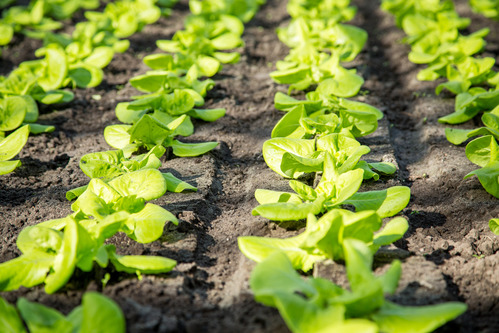Keep the fertility of greenhouse soil up to standard
16 December 2019 - Articles
During cultivation, it is important to know the level of nutrients the soil can provide and how much a crop needs. In this way, the correct amount of nutrients can be given by fertilization. Fixed nutrients in the soil are released slowly and often need to be supplemented by a corrective fertilization. This prevents a decline in soil fertility.
Eurofins Agro offers two packages of tests for greenhouse soil. The Greenhouse Soil Check package provides an insight into the directly absorbable nutrients and the new Greenhouse Soil Stock package gives an overall picture. Greenhouse Soil Stock provides information not only about soil reserves, but also about other key characteristics of greenhouse soil, such as cation exchange capacity (CEC), pH, organic matter content, structure and texture.
 Maintaining soil fertility
Maintaining soil fertility
For sustainable use of greenhouse soil, it is not just important to supplement the nutrient uptake by the crop. The Greenhouse Soil Stock report states the values measured for main and trace elements, together with a target trajectory and a recommendation. This makes it possible to carry out a corrective fertilization after cultivation.
Greenhouse Soil Stock also provides an insight into the physical properties and soil life. Three parameters for soil life are specified. Understanding these key figures is essential to maintain a resilient and fertile greenhouse soil.
- Microbial biomass: the total amount of biomass based on the phospholipid fatty acids (PLFAs) present. These fatty acids are an important component of the cell walls of all microorganisms in the soil. Because these fatty acids are quickly broken down in the soil, this gives a measure of the total amount of living soil life.
- Microbial activity: measuring how much organic matter is broken down by the soil life gives an impression of the activity of the microorganisms present. The amount of nitrogen (N) released when organic matter breaks down within a certain time frame gives a measure of the microbial activity.
- Fungal-to-bacterial ratio: this ratio provides a picture of the mineralization process in the soil. If there is a high fungal content in the greenhouse soil, organic matter builds up. In soils with relatively more bacteria, conversely, the amount of organic matter declines due to decomposition, and nitrogen and sulphur mineralization are relatively higher.
With this information at your fingertips, you can put the right measures in place to maintain or even improve your soil ecosystem. A healthy greenhouse soil needs plenty of organic matter as this feeds the microorganisms. You can boost soil life by adding soil improvers such as compost, manure or other organic products. Leaving crop residues in the soil also has a positive effect on soil life. In addition, a healthy soil life requires plenty of oxygen. Measures that improve the soil structure therefore have a positive impact on the quality of the greenhouse soil.
Want to know more about the fertility of the greenhouse soil? Here you can order an analysis >
